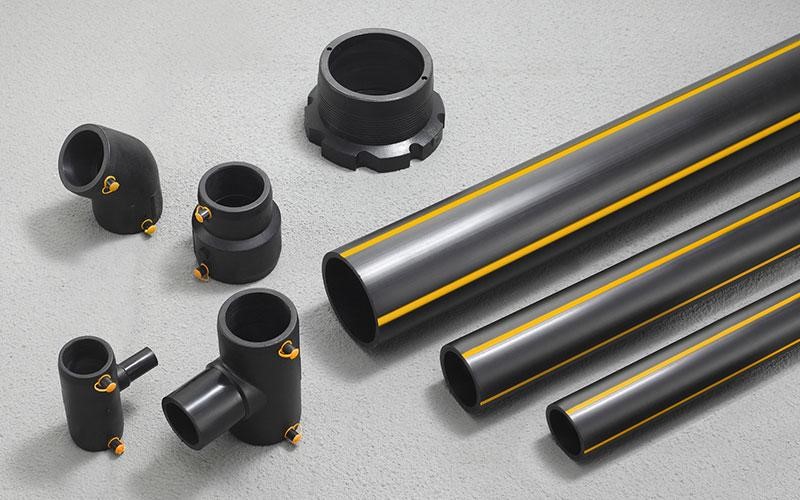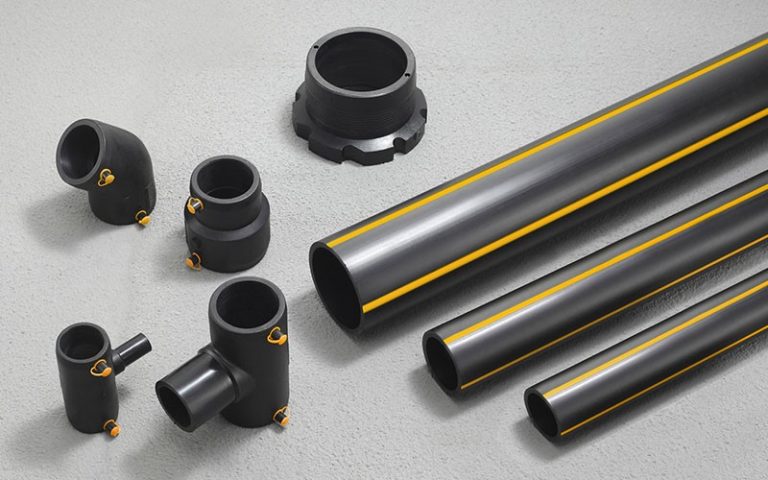Table of Contents
There are various solutions in place that ensure gas travels every place where it is needed. This article introduces 4 solutions to transportation of gas, which are gathering lines, transmission lines, distribution lines, and storage & service lines, and teach you how to choose appropriate pipe material for the transportation.
What are Transmission Lines?
One of the most important aspects of our everyday life is gas. We need it for fuel, cooking, and as a major source of energy that can be utilized for our everyday activities. But how exactly do we get gas from oil wells right to our doorstep for daily use? Well, there are a number of factors that come into play here, but the most major factor is the gas transmission line that does the majority of the delivery work.
Now you might be asking, what are transmission lines? Well, you can consider transmission lines as blood vessels in your body. The oil that is mined and received from major oil wells first goes to gathering systems. These gathering systems also act as purifiers for the gas and remove any kind of impurity that may have come along with it. After it is cleansed of impurities, the gas is propelled further into transmission systems so that the gas can be distributed.
Now we come to the savior that helps deliver the actual gas to our homes – transmission lines. These lines have a larger diameter than previous lines to accommodate the large supply of gas. They are coated from the outside and specially designed for the purpose of transporting gas over vast distances.
To ensure the transmission lines don’t explode from the gas pressure, they are designed to handle much more than is actually needed. To ensure the gas’s continued momentum, compressor stations are installed every 70 to 160 kilometers which maintain a speed of about 40 km/hr for the gas. Without transmission lines, the gas will never be able to reach distributors, and we would face a severe lack of it.
Solutions for the Transportation of Gas.
There are various solutions in place that ensure gas travels every place where it is needed. These solutions are varied and have different functions. Even so, their purpose remains the same – safe and proper delivery of gas to each city. Examples of the solutions that are available are listed down below.
Gathering lines
Gathering lines are the first stop for gas. It is here that they are stored for a while before being sent off to distribution companies. These lines are often small and rely on field compressors to move gas through the pipeline. Many times, these lines also serve as processing facilities to remove impurities from the gas.
Transmission lines
As said earlier, the gas from gathering lines is sent to transmission lines for further transportation. These are powered by compressors that maintain the gas’s traveling speed. They are also much larger in length to have the capacity for uncompressed gas.
Distribution lines
Transmission lines merge into distribution lines that are smaller and have considerably less gas pressure in them. The pressure and pipelines are both regulated with precision at the slightest disturbance to prevent accidents. An odor is also added in these very lines that give them a distinctive smell which helps us in identifying gas leaks.
Storage and service lines
If the gas needs to be stored either for future purposes or emergencies, it is done so in underground facilities. These facilities are generally either cavern full of salt that has distinct properties or depleted gas reservoirs. The gas from this storage, or the pipelines directly, is transported to everyone’s homes using service lines. From there, they become the responsibility of the customer.


How to Select the Right Pipe Material for Gas Transporting?
Since the transportation of gas is a risky venture, there needs to be proper safeguards and precautions in place to protect it from leaking and damage. Gas pressure can easily rupture open a non-protected pipeline, causing a major incident. When you are considering the perfect pipe material for transporting gas, you need to understand the needs of that particular section.
For example, transmission and gathering lines are made of special high-carbon steel for long transportation. Gathering lines and transmission lines have the same material, but their production is completely different, and they are often made in special factories for each. Another thing they have in common is that they both are coated with a special coat like fusion bond epoxy that gives the pipelines a distinct color.
Distribution lines, on the other hand, are a different story. Since distribution companies are much, much closer to the general population, the materials their pipelines are made of are also designed to be sturdier. These pipes have the most concentrated construction standards. These pipes are made of high-grade plastic and composite materials with excellent strength. These pipelines are regularly checked for fractures and cracks, which ensures their integrity. However, these materials are a perfect choice considering their function, and these materials do their job of transporting gas quite well.


Summary
Now you must be aware of the arduous journey your gas goes through so that it can finally fulfill all your fueling needs at your house. The entire gas transportation system is an engineering marvel considering the risks and dangers natural gas comes with. This system is flawless and works quite well, and our company at China LESSO only serves to enhance that system.
Now you might ask, how exactly do we do that? And our answer is our PE gas transmission pipe! Our company is committed to becoming a world-class conglomerate that provides outstanding price-performance for our products, and the shining example of this is our PE gas transmission pipe.
Our gas transmission pipe is made for transporting gas through the ground to fulfill every distribution company’s and homeowner’s fueling needs. There are various advantages to utilizing our gas transmission pipe, primarily of which is corrosion resistance from hazardous chemicals and weather.
Our gas transmission pipes have excellent flexibility as well, which means they can be used in any formation. Combine this with the extreme installation of our pipeline, and you have a product at your hands that can only be called the ideal gas transportation solution. Our pipelines also last much longer than traditional pipes, with a lifetime of about 50 years. After that, they can be easily recycled and are very environmentally friendly.
Recommend Reading


Types of Pipes and Their Lifespans
Lifespan refers to the length of time piping should remain in functional condition without needing repairs or replacement. Homeowners should be aware of the expected


Gas Piping: A Simple Definition
The gas system in your building is crucial to your safety and the safety of other occupants. Having a high-quality gas piping system ensures both








